Amazfit GTS 2e Review
Amazfit GTS 2e Review
A good value fitness tracker
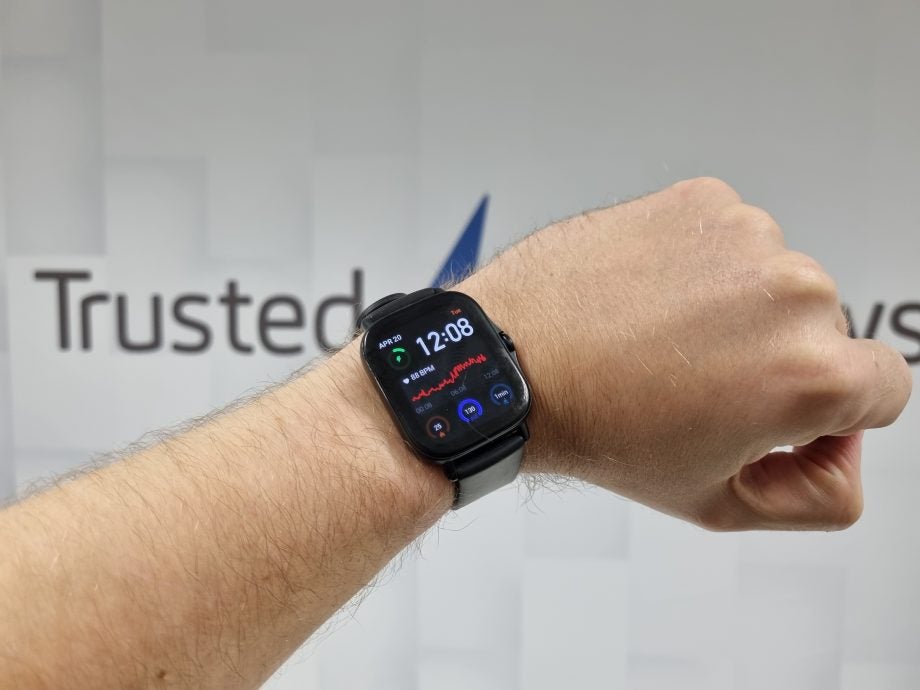
Verdict
The Amazfit GTS 2e is a reliable, easy to use fitness tracker with a pleasingly discrete, Apple Watch-like design. This makes it an ideal companion for most newbie or casual gym goers. The only downside is that its lack of NFC and call functionality, plus its locked down custom software, make it a poor choice for people that want a full fat smartwatch.
Pros
- Discrete design
- Solid fitness tracking for newcomers
- Intuitive software
Cons
- Limited smartwatch functionality
- No NFC
Key Specifications
- Review Price: £119.99
- 1.65-inch, always-on, AMOLED
- 50m Water Resistance
- 14 day battery (quoted)
- GPS
- Zepp software
The Amazfit GTS 2e is a sleek fitness tracker that tries as hard as possible to look like an Apple Watch.
If this sounds familiar, it should. This is a common tactic employed by numerous other wearables including the Oppo Watch I reviewed earlier this year.
This makes the Amazfit GTS 2e, on paper at least, a pretty by-the-numbers product. But after a solid month using the device as my primary fitness tracker I can confirm it’s a great value wearable for any casual or newbie gym-goer looking to take their exercise regime to the next level.
The only downside is that its proprietary software’s limited functionality stop it from earning a place among the best smartwatches on the market.
Amazfit GTS 2e design and screen – Great for the money
- The Amazfit GTS 2e looks all but identical to an Apple Watch
- It features an excellent 1.65-inch Always-on AMOLED screen
- Build quality is excellent
The Amazfit GTS 2e is the cheaper option in the firm’s current line-up, sitting above the slightly more premium Amazfit GTS 2.
But from a design point it’s all but identical to its more expensive sibling, which is no bad thing. This means it looks a lot like the ruling Apple Watch 6, featuring a discrete square main body, aluminium chassis and single physical button on its right side.
It’s not the most original design, but that’s not a problem. The moment I took the device out of the box it felt significantly more expensive than its $139.99/£119.99 price would suggest.
From a design point of view, the only thing differentiating the 2e from the Amazfit 2 is that the latter’s screen has ODLC coating. This is an added layer of protection designed to help ward off scratches. While this is a welcome feature on any wearable, I didn’t have any issues with the 2e’s build quality.
The chassis is rugged, to the point it easily survived an accidental encounter with a free weight during testing. The 5ATM rating also means it’s robust enough for use underwater to depths of 50 meters, and can be worn in the shower.
My only minor quibble is that the device’s proprietary magnetic charge cable detaches from the unit fairly easily. During testing I regularly found the connector would snap off when met with even moderate force. With two cats roaming around the flat this meant I’d often find the connector had been disconnected by a rogue tap when I came back to use it after a night on charge.
Screen quality and usability are also solid, though the Amazfit GTS 2e’s software does come with some quirks.
The screen’s a 1.65-inch AMOLED. This makes it a tiny bit smaller than the 44m Apple Watch SE, which has a 1.78-inch OLED screen. Truth be told, switching between the two I didn’t miss the extra screen real estate as the GTS 2e’s touch screen is one of the best I’ve tested on a wearable at this price.
The use of OLED ensures blacks are wonderfully inky and colours, while a little warm for my liking, have plenty of punch. Max brightness levels are good enough that I never struggled to read the screen, even when using it outdoors in direct bright sunlight.
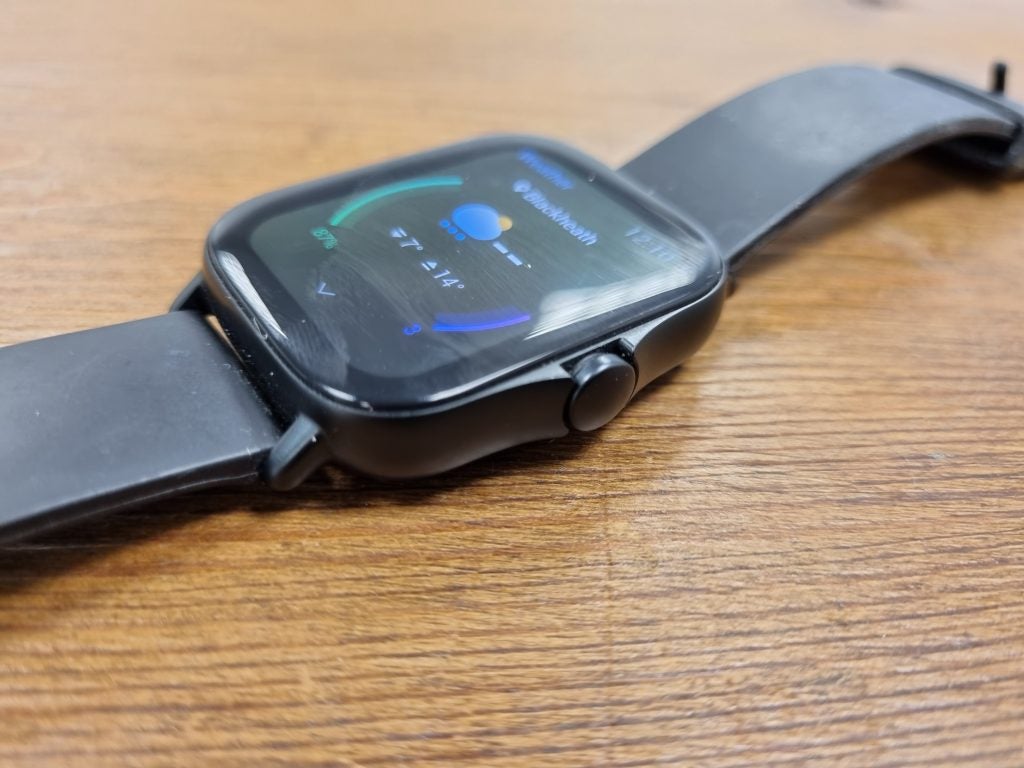
The touch panel is also wonderfully reactive, and operates surprisingly well, even when slightly wet. During testing the touch screen continued to measure my instructions, even when I was covered in sweat after a workout. This is an achievement beyond a lot of the trackers I test with touch screens.
The only downside is that the touch screen doesn’t have a battery saving variable refresh rate – though considering the price it’s hard to knock it too much for missing out on such a flagship feature.
Always on displays are a feature that makes the screen display basic information, like the time 24/7. On a watch they’re incredibly useful, but without a variable refresh rate they can severely impede a device’s battery life. A variable refresh rate is a nifty feature seen on more expensive wearables, like the Apple Watch 6. It lets the screen reduce the number of images it shows per second, depending on what the device is doing, saving battery in the process.
I tend to recommend turning off the always on display functionality on any wearable with an OLED or LCD panel if it doesn’t have a variable refresh rate as the gains, in my experience, don’t outweigh the benefits of a longer battery life.
Amazfit GTS 2e performance and features – Basic smartwatch services
- The Amazfit GTS 2e’s Zepp software has very basic smartwatch functionality
- The Amzfit GTS 2e doesn’t feature NFC or local music playback
The Amazfit GTS 2e runs using parent company Zepp’s proprietary software. This makes it a very different device from the sea of competing Wear OS watches I’ve tested recently.
Specifically, it means the Amazfit has an unashamed focus on fitness and health monitoring over smartwatch functionality. The only customizability you get is via a choice of watch faces and the order of widgets. There’s no local navigation, like Google Maps either.
As a result, the smartwatch functionality is incredibly limited, even compared to Garmin OS and Fitbit OS, which are also fairly barebones.
The only things you’ll get on the Amazfit are basic notification support, weather updates, the alarm and Bluetooth music controls. During testing I’ve found even these can be a little hit and miss. Pairing the device with a Galaxy S21 Plus and OnePlus 9 over the month with the device the notifications support has been particularly spotty, with it failing to push incoming alerts at least two or three times a day.
The lack of NFC functionality and an onboard mic also means you won’t be able to make payments, take calls or use digital assistants using the GTS 2e, further hindering its appeal as a dedicated smartwatch.
Unlike the Amazfit 2, the 2e doesn’t feature local music playback. This is an omission I see on most wearables, even high-end ones like the Polar Vantage V2, outside of Garmin’s. But it’s still a key annoyance, especially if, like the Amazfit GTS 2e, the watch has GPS functionality. If a person wants a GPS watch it’s because they don’t want to have to take their phone with them when they exercise outside.
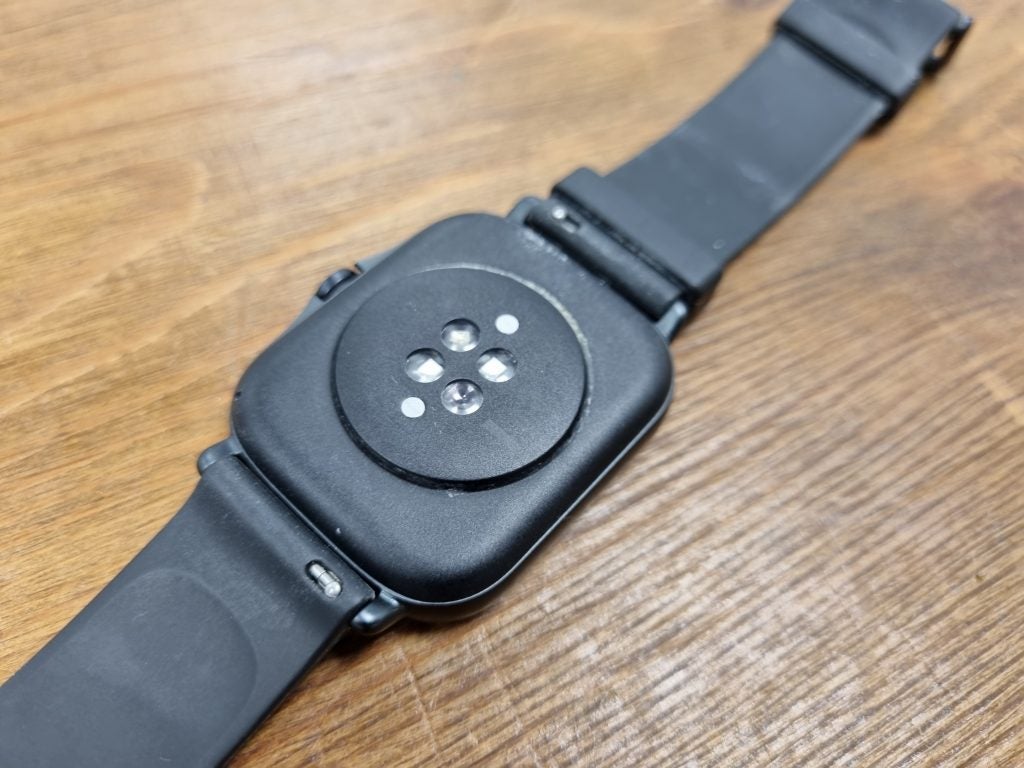
Amazfit GTS 2e fitness tracking – Great for newbies and casual users
- The Amazfit GTS 2e is a fitness tracker, not smartwatch
- It runs using proprietary Zepp software
- Fitness tracking services are great for new and casual users, but serious athletes will want more
Thankfully, the device makes up for this by offering solid fitness tracking services. The watch comes with all the hardware you’d expect from a mid-tier fitness tracker, including GPS and an SpO2 sensor. The latter is a useful health feature that detects how much oxygen your blood is holding. This is a key metric that can be used to spot early health issues and track fitness improvements.
The only minor omission is that, unlike most modern wearables, the watch doesn’t support Europe’s Galileo positioning system. This is a new network of global positioning satellites currently being built by Europe. It’s designed to be significantly more accurate than GPS. Its absence isn’t a deal breaker as GPS and GLONASS are good enough for most runners and cyclists living in populated areas, but it’s a thing to consider if you like to take more extreme adventures.
If that’s the case I’d heavily recommend spending more and investing in a more dedicated tracker, like the Fenix 6 Solar I reviewed last year. This offers a more rugged design, lengthier battery and significantly more developed navigation services. The only downside is it costs a lot more than the Amazfit GTS 2e, which has a less hardcore focus.
Out of the box it can track everything from basic activities, such as running, cycling and swimming, plus more advanced sports, like boxing, snowboarding and dancing.
Due to lockdown restrictions I only managed to test the running (indoor/outdoor), cycling (indoor outdoor), boxing, free training and basketball options.
In general I found the Amazfit is a competent tracker that’s easily on a par with competing, similarly priced products, such as the Garmin Vivosport.
Heart rate monitoring remained suitably uniform during runs and cycles and offered a decent metric for when I was stressed. The only time I noticed anomalies was when doing intense training, like HIIT and working a boxing bag. Here, like the majority of wearables I test, the device struggled to keep up with the rapid fluctuations in my heart rate as I went from intense periods of activity to short rests. As ever, if you want really accurate heart rate tracking, you’re going to want to invest in a dedicated HRM strap to complement your wearable.
Distance tracking is good, for a wearable this price, but not best in class. Testing the Amazfit GTS 2e on a track I know is roughly 5.3km and comparing results against the Garmin Fenix 6, there were on occasion some minor disparities. Running the same track around Deptford park you can see below the GPS would occasionally drop out or get a slightly inaccurate position, causing as much as 0.4km disparities in distance tracked between runs.
![]()
The data presented post workout is brilliant for newbie and more casual users. In general each workout will present basic data, such as average heart rate and distance tracked. But what makes it useful, is how it presents heart rate zones. Instead of simply color coding them the watch breaks down the zones into “relaxed”, “warm up”, “fat burning”, “aerobic”, “anaerobic” and “maximum” line charts showing how long you were getting these benefits during the workout. This makes it quick and easy for newbies to get an at a glance breakdown of how they performed, without getting bogged down in more serious stats.
If that’s still too much information, the watch also has a custom PAI metric. This is designed to be a one stop goal to aim for each week. According to Zepp the custom metric uses your biometric data and a custom algorithm based on research from the HUNT scientific body to offer a tailored score detailing your overall physical condition. The reality is it’s a gamified feature that awards you points for every activity you do with an end goal to keep it above 100 day-to-day. I personally haven’t found it that useful, as with a 30 minute daily morning workout I’m yet to see my score drop below 120. But I can see it being a good motivator for people that are just getting into exercising.
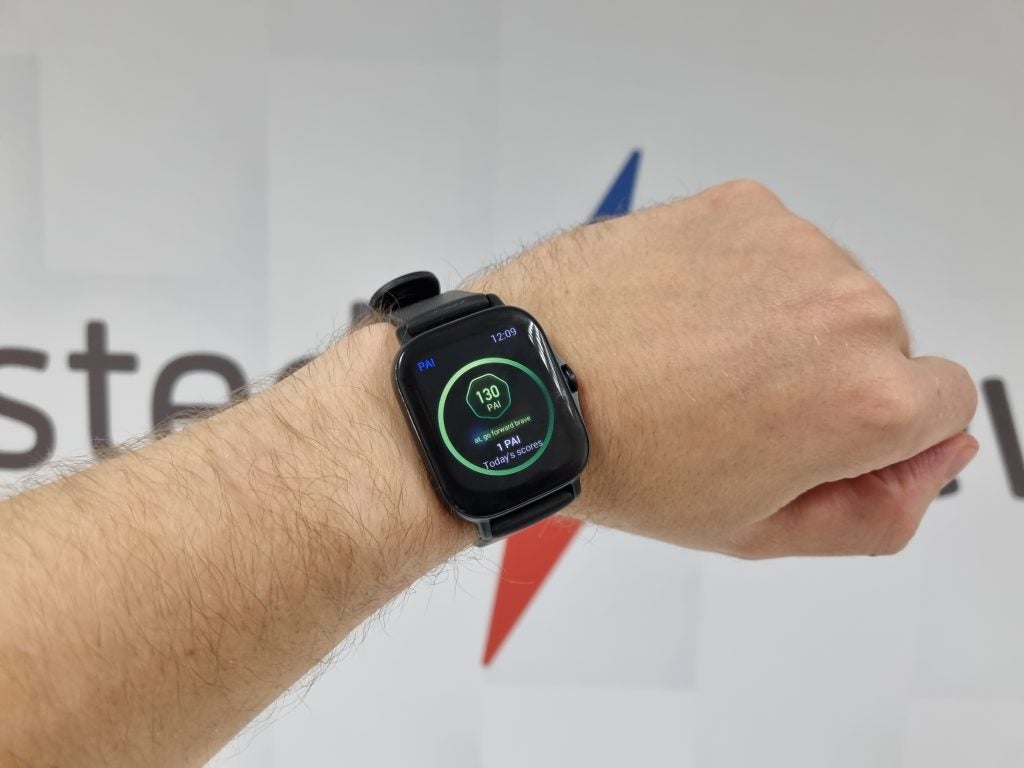
Outside of this, the only downside is that, unlike more serious trackers there isn’t a metric to show recommended rest periods. This is a key factor I like about Polar and Garmin wearables that helps you avoid overreaching and causing your body more harm than good when starting a new regime.
Sleep tracking is fairly par for the course, with the tracker offering a simple breakdown of how long you slept broken down into a color coded chart showing how much of it was light, deep and REM resting. As ever my only annoyance is that the watch kept telling me I’m bad at sleeping, which personally I’m fairly sure is one of the few things I’m 100% good at.
Amazfit GTS 2e battery life – At least a full week’s use
- The watch will last a week, if you turn off the always on display setting
- GPS puts a heavy drain on the battery
Zepp quotes the Amazfit GTS 2e as offering users 14 days “typical use” and 7 days “heavy use”. During testing I’m yet to get a full fortnight’s use out of the wearable, especially with the always on display setting activated.
With it on, I generally managed to get around 3-5 days use out of the watch before having to charge it. This entailed using it with notifications active and to track a daily 30 min morning workout and three 5km runs with the GPS on. This isn’t a bad score by any means, it’s also a cut above what you’ll get on dedicated smartwatches, such as the Apple Watch SE and Oppo Watch, which struggle to last more than 2-3 days use. It’s just slightly lower than the quoted life.
Turning off the always on display setting and things got way better. With it deactivated, with the same use, I managed to extend the battery to around 7-10 days, which is excellent.
The only thing to be aware of is that, like all wearables, GPS distance tracking will put a very heavy drain on the battery. 30 minutes tracking generally shed at least 15-20% of the watch’s battery during testing. This won’t be an issue for newbies, but it makes the watch a poor choice if you want to use it to track marathons.
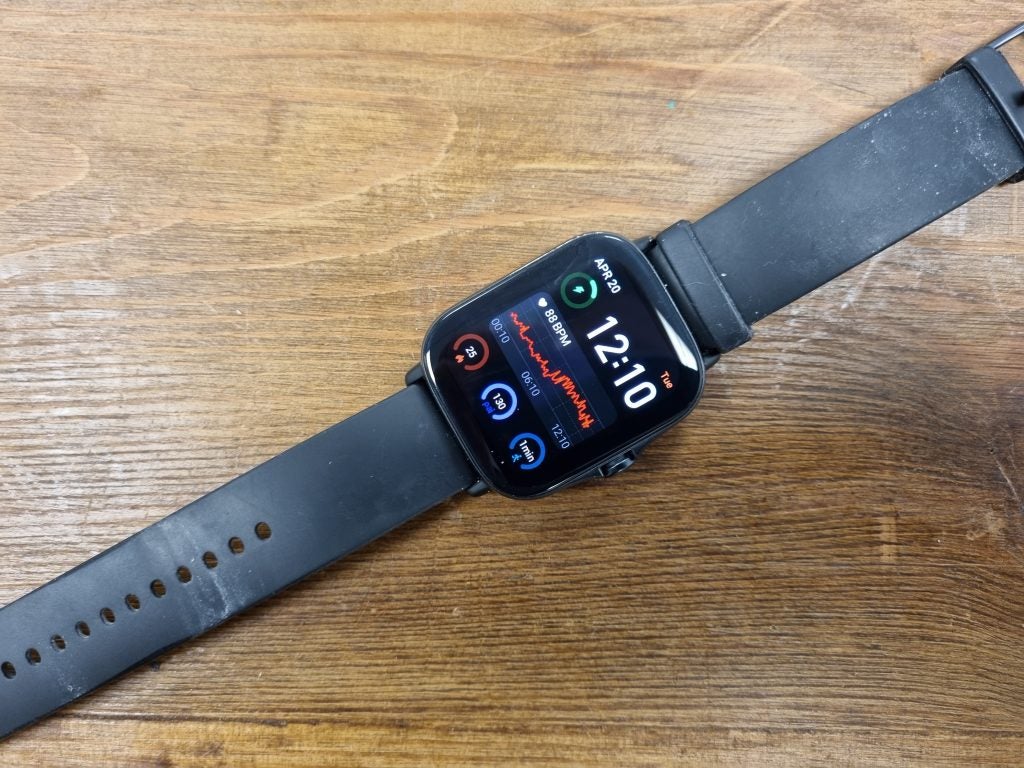
Amazfit GTS 2e conclusion
The Amazfit GTS 2e is a competitively priced fitness tracker with a distinctly subtle design. This makes it a great choice for any fashion conscious buyer looking to for a no thrills fitness tracker that can be comfortably worn in and outside the gym. The only downside is that its Zepp software is a little light on smartwatch features. As a result…
You should buy the Amazfit GTS 2e if:
- You want a discrete easy to use fitness tracker:
The Amazfit two is one of the sleekest looking fitness trackers you’ll find at this price, featuring a distinctly Apple Watch-like aesthetic and wonderfully easy to use fitness tracking features.
- You’re just getting into exercising:
The Amazfit GTS 2e has wonderfully intuitive activity tracking services that breaks down your post workout data into bite sized easy to understand segments, making it a great fit for people just getting into exercising.
You shouldn’t buy the Amazfit GTS 2e if:
- You want a smartwatch:
The Amazfit GTS 2e may look like a smartwatch, but it’s lack of app support, NFC connectivity and local music playback make it a poor choice for people that want a smart timepiece first, fitness tracker second.


